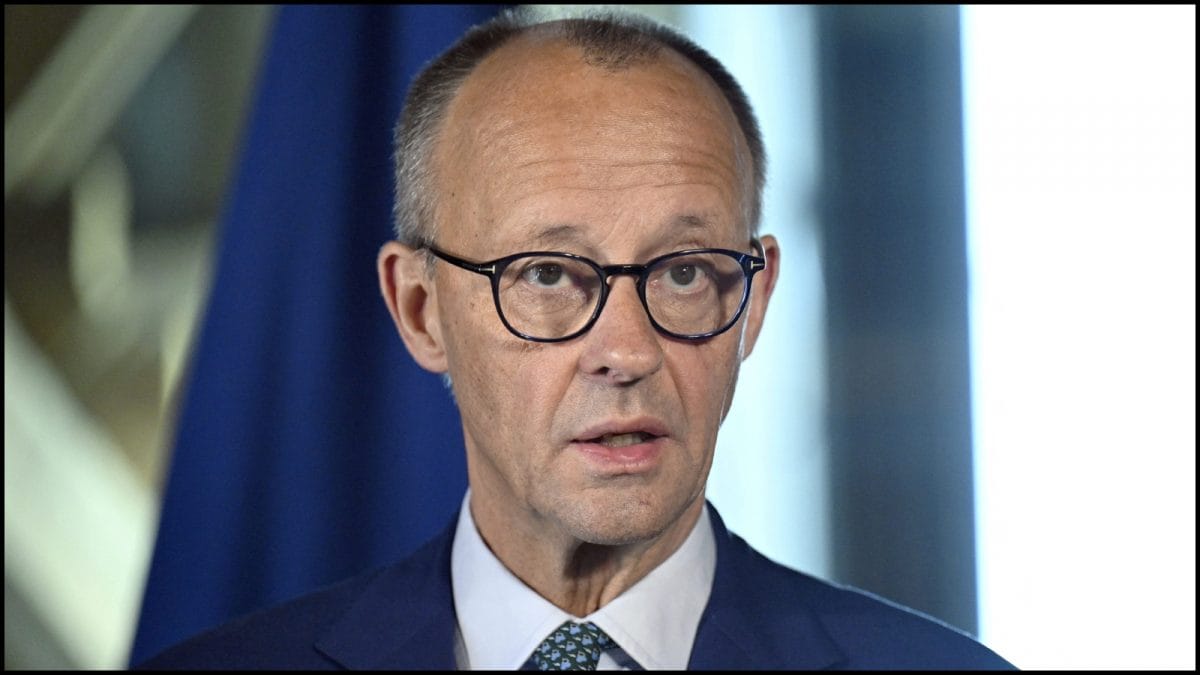ARTICLE AD BOX
Last Updated:June 24, 2025, 15:38 IST
Singh, an economics graduate, left his corporate career to revolutionize MMA and BJJ in India. He founded Crosstrain Fight Club, training 500+ students and producing UFC fighters.

Siddharth Singh with one of his many medals. (Instagram/@cfcsid)
In the global arena of combat sports, the narrative of India is one of burgeoning potential, a sleeping giant on the cusp of awakening. At the heart of this transformation is Siddharth Singh, a figure whose journey is as improbable as it is inspiring. His story is not merely one of athletic success, but of a profound pivot from a life of conventional prestige to a formidable mission: to sculpt the future of mixed martial arts (MMA) and Brazilian Jiu-Jitsu (BJJ) in India.
Armed with an economics degree from the University of St. Andrews and a promising corporate career in London, Singh was on a well-defined path to comfort and success.
Yet, a deeper calling, first ignited by his boxing days at The Doon School, refused to be silenced. This passion led him to trade his secure existence for a financially perilous venture, one that left him “at broke" within a year, all for the ambitious dream of professionalising the sport in his homeland and ultimately nurturing India’s first Ultimate Fighting Championship (UFC) champion.
Singh’s journey in martial arts began at age 12 with boxing, a discipline he pursued for six years and describes as his “number one love when it comes to combat sports." His training evolved to include Muay Thai, a “brutal sport" renowned for its comprehensive striking. This extensive background as a striker set the stage for a moment that would fundamentally reshape his understanding of combat.
The revelation occurred during a Jiu-Jitsu seminar where he was initially sceptical, observing people “rolling around on the floor, hugging each other," a stark contrast to his preference for stand-up fighting. Despite his 12 years of striking experience and weighing 70 kilograms, he was utterly dominated by his training partner, a woman, who was “tiny," weighing only “45 kilos."
The outcome was shocking. “Within 20-30 seconds, she choked me unconscious," Singh says.
He went “hard the second time around," only to be submitted again in 30 seconds.
This humbling defeat was a profound epiphany, demonstrating unequivocally the supremacy of technique over sheer strength. It captivated him with the strategic depth of BJJ, which he calls “human chess," and immediately sparked a realisation of its monumental potential for self-defense.
“Imagine if women of India can learn this. From a self-defense perspective, it’s brilliant. That’s how I got into it", Singh tells News18 Sports in an exclusive conversation.
The decision to leave his life in the UK was driven by a dual impetus. First, he observed the rapid global growth of MMA and noted the UFC’s repeated emphasis on India as a key future market. The more immediate push, however, came from a visceral personal experience during a visit home.
While seeking an MMA academy in Delhi for his brother, they encountered a “terrible experience." The coach was unprofessional – arriving late, dressed in jeans, and picking a fight with Singh for offering a simple coaching tip.
This first-hand exposure to the disorganised and unprofessional state of the sport in India, combined with his family’s urging to “do something about this," cemented his resolve. In 2012, Singh invested his entire life savings to launch Crosstrain Fight Club in Delhi. The venture highlights a significant gap between the market potential perceived by global entities like the UFC and the stark, unorganised reality on the ground, which was rife with unprofessionalism and a severe lack of quality coaching. His actions were not just about opening a gym; they were about addressing a critical market failure and laying the foundational infrastructure for an entire industry, often at great personal cost.
Today, Crosstrain Fight Club trains over 500 students and has been instrumental in producing India’s first UFC fighters, Anshul Jubli and Puja Tomar.
Before Singh’s intervention, the landscape of Indian combat sports was plagued by systemic issues. As a 10-time national Jiu-Jitsu champion, he experienced the abysmal conditions first-hand. He vividly recalls tournaments where athletes were given a week-long window for their fights with no specific schedule, forcing them to warm up repeatedly for days on end.
“We’ve gone through the entire phase of just suffering as an athlete," he states, recounting events with no food or water provided. Fights scheduled for five minutes would be arbitrarily cut short to one minute, and in one egregious instance, officials simply abandoned a tournament at 10 p.m., asking coaches to referee the remaining matches themselves before the lights were shut off.
Beyond the chaos, financial struggles crippled the ecosystem. Singh explains that without access to government stadiums, coaches are forced into private facilities with high rents, a cost passed on to athletes.
“A lot of the hard-working, talented fighters can’t make it because they don’t have money to pay," he laments. This forces many coaches, including himself, to personally sponsor fighters from their own pockets, a difficult undertaking in an already challenging industry.
Singh is also critical of the sports federations, asserting that “the right people need to be in charge."
He argues that most have been run by “karate guys or people from completely different backgrounds" who saw the federations as a “money making thing" rather than a vehicle for sport development.
This vicious cycle of poor governance, lack of infrastructure, and financial burdens creates a shallow talent pool and sties growth, a system Singh is determined to break.
In direct response to these amateurish conditions, Singh has committed to organising world-class events. Upon connecting with the Abu Dhabi Jiu Jitsu Pro (AJP), his goal was to “change the playing field for the athletes." This meant ensuring venues were fully air-conditioned with clean washrooms and that fights started and ended on time. The first AJP event at Indira Gandhi Stadium was a significant step forward, followed by another at the “massive," world-class Jaypee Sports Complex in Greater Noida. As the head of ADCC India, he has transformed a small tournament into the nation’s largest grappling event.
The story of securing the ADCC (Abu Dhabi Combat Club) affiliation is a testament to his perseverance. After emailing the organisation for six years with no response, he befriended a former UFC fighter who eventually made an introduction. The ADCC Europe head was dismissive, challenging Singh to compete and perform well in a tournament in Taiwan to even earn a conversation.
Singh flew to Taiwan, competed, and won the tournament. “It’s like one of those fictional stories where the guy had to go and win a tournament," he recounts.
This act of earning recognition through merit, not politics, is a powerful counter-narrative to the profit-driven motives he criticises in other federations. His philosophy for growth is similarly grounded in integrity: “just keep doing good quality events… honest, hard work, and… sincerity and high quality."
As a coach, Singh’s philosophy is defined by sincerity and adaptation. He firmly believes “one has got to make different plans and different strategies for different fighters." His work with India’s first UFC talents, Anshul Jubli and Puja Tomar, showcases this tailored approach.
Anshul is described as a “thinking man when it comes to fighting," someone who is sincere and possesses a remarkable ability to absorb and retain knowledge. Singh notes Anshul’s “keen eye for learning" allows him to recall specific techniques taught years prior.
In contrast, Puja Tomar is characterised by her spirit. “Pooja’s got a spirit. She’s got a lion in her," Singh says. “She just pushes. Every class she’s breaking. Her body, her mind is saying, okay, I’m done enough. But she pushes through."
This adaptive coaching, which nurtures Anshul’s intellect and pushes Puja’s indomitable will, is crucial for maximising their potential and developing a diverse pool of elite athletes. His technical acumen is also highly nuanced, understanding that a technique like a triangle choke must be applied differently in sport Jiu-Jitsu versus a real-world self-defense scenario where controlling an opponent’s hands to prevent strikes is paramount.
Singh holds a profound passion for promoting women’s self-defense, viewing it as a critical necessity in India. One of his students, attacked by a taxi driver, used a triangle choke she had learned to “choke him unconscious" in the backseat within 10 seconds, then calmly called another cab and reported the incident to the police, leading to the driver’s arrest. This incident, Singh says, proves how Jiu-Jitsu can be a “superpower for women to know."
Another moving experience was a workshop at a women’s orphanage, where he was “completely blown away" by the 500 girls eager to learn skills so vital for their safety. Despite these clear benefits, he identifies significant cultural barriers, lamenting that many talented girls are forced to quit because “their family objected to it, or their boyfriend said no, or their husband said no." He explicitly frames Jiu-Jitsu not just as a sport, but as a tool for social change, instilling a “level of confidence" that challenges patriarchal norms limiting women’s autonomy.
Singh’s ultimate vision is multifaceted: To create a UFC champion from India while fostering holistic, grassroots growth.
He believes these goals are inextricably linked. A champion, he argues, would act as a strategic lever, citing how Jubli’s “Road to UFC" victory caused the sport to “explode," with his social media following growing exponentially.
“All these explosions happen because of superstars," he says, drawing parallels to figures like Conor McGregor and Ronda Rousey. “We can make an Indian a UFC champion, it’s going to happen."
To achieve this, he identifies two critical areas needing institutional support. First is access to infrastructure, as the lack of government stadiums forces high private rents and excludes talented but less affluent fighters.
“I would love for some of the big players or the government to step in and give us access to some of the training facilities," he states.
Second is better remuneration and recognition, such as a guaranteed job for successful athletes, which is common in other government-recognised sports. The absence of such prospects is a “bottleneck" that discourages parents and athletes. This sophisticated “dual-engine" strategy recognises that sustainable growth requires both top-down inspiration from superstars and bottom-up foundational support.
Singh’s unyielding spirit continues to drive this revolution, paving a new path for Indian combat sports toward professionalism, achievement, and global recognition.
News18 Sports brings you the latest updates, live commentary, and highlights from cricket, football, tennis, badmintion, wwe and more. Catch breaking news, live scores, and in-depth coverage. Also Download the News18 App to stay updated!
- Location :
Greater Noida, India, India
- First Published:
News sports Siddharth Singh: The Vanguard Of India’s MMA And BJJ Revolution



.png)
.png)
.png)
















 7 hours ago
3
7 hours ago
3









 English (US) ·
English (US) ·